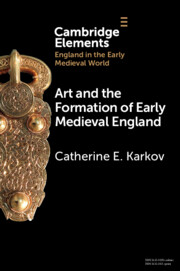Element contents
Art and the Formation of Early Medieval England
Published online by Cambridge University Press: 28 February 2022
Summary
- Type
- Element
- Information
- Online ISBN: 9781108942935Publisher: Cambridge University PressPrint publication: 10 March 2022
Bibliography
Primary Sources
Secondary Sources
- 7
- Cited by

